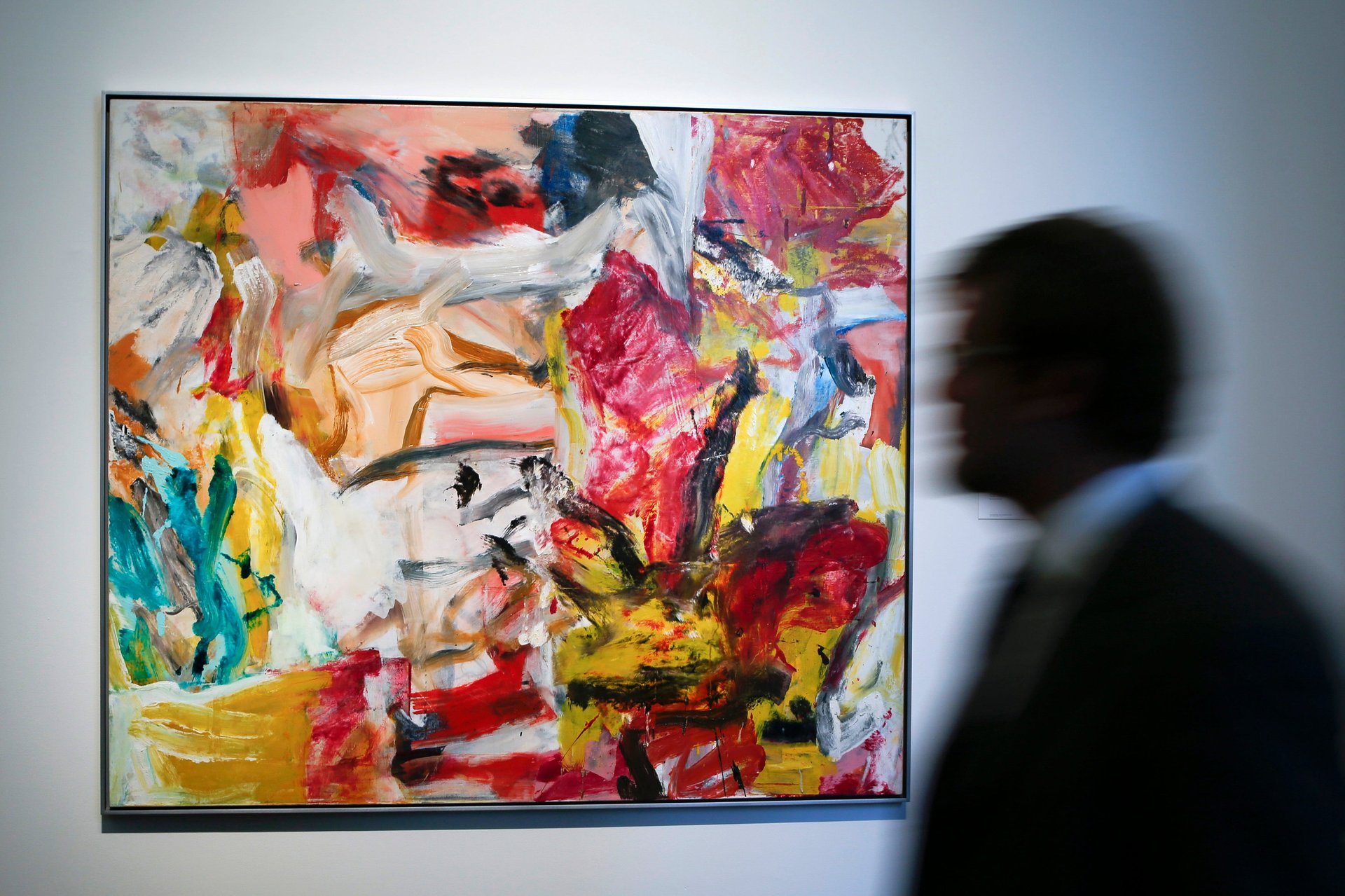Psychologists studying paintings by de Kooning found patterns revealing future Alzheimer’s
Alzheimer’s disease is thought to begin long before the appearance of disease’s most common telltale symptoms—memory loss, confusion, and difficulty making plans. These future brain changes, according to some research, can be detected in textual analysis of novels and political speeches.


Alzheimer’s disease is thought to begin long before the appearance of disease’s most common telltale symptoms—memory loss, confusion, and difficulty making plans. These future brain changes, according to some research, can be detected in textual analysis of novels and political speeches.
In one famous study of young nuns called the Nun Study of Aging and Alzheimer’s disease, a neurologist at the University of Minnesota examined autobiographical essays by several hundred young nuns and found a correlation between writing that contained a low density of ideas per sentence and the risk of developing dementia late in life. Now a new, controversial study suggests that artwork, too, can provide clues about future brain deterioration.
In a study published today in Neuropsychology, a psychologist at the University of Liverpool argues that early signs of neurodegenerative disease can be unmasked in the works of master artists through mathematical analysis of the artists’ brushstrokes. Alex Forsythe, the lead author, discovered that mathematical patterns—called fractals— that underlie a piece of art changed in the work of major painters who eventually developed Alzheimer’s or Parkinson’s.
Fractals, often referred to as nature’s fingerprints, are never-ending patterns that repeat in similar or identical ways at different scales. Branching fractals, for example, are visible in trees, and in aerial views of rivers and mountain ranges. Spiraling fractals are seen in ferns, seashells, and the textured spikes of Romanesco broccoli, while other fractal types appear in individual snowflakes.
To uncover fractal patterns in a painting, scientists subject images to specialized computer programs that place a virtual grid over the work, then measure the brushstroke patterns repeating within the grid’s smaller squares. Using this method, a British physicist famously detected that Jackson Pollock’s seemingly chaotic paintings actually contain fractals that are pleasing to the eye, even if the viewer is not conscious of why. Although its accuracy is debated, the fractal analysis method has been used to authenticate art works of unknown provenance.
For the new study, Forsythe, working with colleagues at the UK’s National Health Service and Maynooth University, analyzed more than 2,000 paintings collected from museums and galleries. All were produced by one of only seven legendary painters: Willem de Kooning or James Brooks, who were both eventually diagnosed with Alzheimer’s; Salvador Dalí or Norval Morrisseau, who both developed Parkinson’s disease; and Marc Chagall, Claude Monet, or Pablo Picasso, three masters who did not suffer from any neurodegenerative diseases. The last three artists served as the control group.
Fractal testing revealed that the artists whose gray matter was eventually compromised began to work outside of their normal range of fractal dimension—defined as a measure of how completely a pattern fills a space—long before their diagnoses. Typically artists will work within the same fractal dimension, whether low or high—for their entire life. This doesn’t necessarily mean they won’t work in different styles, just that their fractal range remains the same, much as a writer will create works in fiction, mystery or other genres in the same voice.
All of the control group artists—Chagall, Monet, and Picasso—were found to have stayed within a relatively steady fractal dimension range throughout their lives. De Kooning and Brooks began to show a wide variance in range in their 40s, while Dali and Morriseau launched their careers working in a low fractal dimension, which increased in during mid-life, before dropping once again.
Because of its small sample size, the study has attracted naysayers. According to The Guardian, Kate Brown, a physicist at Hamilton College in New York, called the research “complete and utter nonsense.”
Acknowledging that the study used a small sample of artists, and that they were limited in the artwork they could access, the authors said their work offers a window into “the pattern of structural changes over time in the work of seven artists.” They believe it could one day point to new ideas for diagnosing neurological disorders years before they surface. Richard Taylor, the physicist at the University of Oregon who first uncovered fractals in Pollock’s paintings, said the study was a “magnificent demonstration of art and science coming together.”